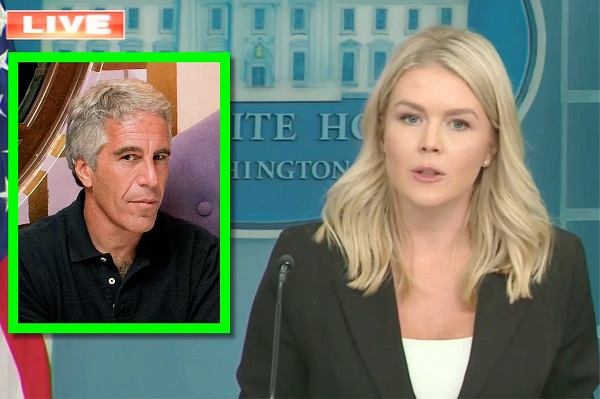Alberta
Investigation concludes suspect convinced girlfriend to lie to police

News Release from ASIRT (Alberta Serious Incident Response Team)
Investigation concluded into use of force during EPS arrest
On Aug. 1, 2018, pursuant to Section 46.1 of the Police Act, the Director of Law Enforcement (DLE) assigned ASIRT to investigate the circumstances surrounding a vehicle pursuit and subsequent arrest of a 31-year-old man. The man had been arrested by members of the Edmonton Police Service (EPS) on July 30 following a brief vehicle pursuit which had resulted in serious injury to an uninvolved pedestrian, and was terminated by intentional contact made by two EPS vehicles.
As is required by the Police Act, these events were reported to the DLE and, based on the information that was known at the time, EPS was directed to maintain conduct of the investigation. Several days later, while being interviewed in relation to that investigation, the man alleged that he had been assaulted during the course of his arrest and had sustained several injuries. This additional information was again reported to the DLE, and ASIRT was directed to assume conduct of the investigation into both the pursuit and any force used during the subsequent arrest of the affected person.
On July 30, 2018, at approximately 12:30 a.m., EPS members operating a marked police vehicle conducted a database check on a red Buick Rendezvous SUV, which revealed the vehicle’s licence plate had been reported stolen. Members followed the vehicle without activating their emergency equipment until the SUV stopped and the driver, later identified as the 31-year-old man, exited. Police then activated their vehicle’s emergency equipment, but the man re-entered the SUV and drove away at a high rate of speed.
Police followed the SUV with emergency equipment activated, and observed the SUV run a red light at 101 Street and 107 Avenue. At this point, several other EPS vehicles had entered the area and additional members were able to observe the SUV. During its flight from police, the vehicle mounted the sidewalk at 102 Street and struck a female pedestrian and a light post. Officers who observed the collision formed the opinion that the collision with the pedestrian was deliberate. Overt action had been required to mount the sidewalk and strike the pedestrian, who was standing in a well-lit area. As well, the man’s vehicle had had an unobstructed path forward with no observable reason or cause to leave the roadway and mount the sidewalk.
After striking the pedestrian and the pole, the SUV continued east on 107 Avenue, with police continuing pursuit. A second EPS vehicle remained at the scene of the collision to render aid to the female pedestrian, who had sustained numerous serious injuries. Having witnessed what appeared to be the deliberate use of the SUV to strike a pedestrian, the driver of the lead EPS vehicle indicated that he believed it was necessary to attempt to end the criminal flight using deliberate vehicle contact. He deliberately struck the rear driver’s side of the SUV, but this tactic failed to stop the vehicle. A marked police van subsequently made deliberate contact with the SUV, this time striking it head-on, and brought the SUV to a halt. The man exited the driver’s seat of the SUV and fled on foot southbound on 103 Street.
Three police officers pursued the man on foot. During this pursuit, the lead officer deployed his conducted energy weapon (CEW), which was successful in bringing the man to the ground. The officer verbally commanded the man to roll onto his stomach, as he had turned onto his back. The man was initially compliant, but resisted when officers attempted to handcuff him. The officer reactivated the CEW, and the man was handcuffed while the CEW was still activated.
Once in custody, the man was observed to be sweating profusely, making spastic movements and acting in a manner that indicated to the arresting officers that he was under the influence of methamphetamine. Accordingly, after searching him, EMS transported the man to hospital.
Medical records obtained during the course of the ASIRT investigation confirmed that at the time of his examination at hospital, the man had a two-centimetre laceration to his forehead which was not actively bleeding, two abrasions on his shoulder area and mild swelling of the front of his head. A CT scan revealed the presence of an age-indeterminate nasal fracture, meaning that doctors were unable to determine whether the nasal fracture had occurred during this event or earlier. Medical staff determined that the man was fit for incarceration, and released him from hospital that same day.
As previously indicated, shortly after he was incarcerated, EPS interviewed the man in the course of their investigation. During that interview, the man described his arrest, discussed his injuries, and asked the interviewer about the condition of the woman he had hit during the incident. Once ASIRT assumed conduct of the investigation, the man was interviewed again – this time by an ASIRT investigator. The man described his flight from police and the collision with the pedestrian but stated that a police vehicle had struck him before the collision with the pedestrian. He also stated that he did not remember hitting anyone.
The man stated that his girlfriend ran away from police following the collision but stopped to watch his arrest. He stated that she told him that at one point six police officers were beating him. The man stated that he did not remember this, but recommended that ASIRT interview his girlfriend. He further stated that at the time of the incident he was under the influence of methamphetamine, which he had used approximately five hours before the incident. He stated that his girlfriend was under the influence of heroin, which she had consumed approximately one hour before the incident.
The man’s girlfriend was interviewed twice during the course of this investigation, once by EPS and once by ASIRT. During the first interview by EPS, she stated that she had been the lone passenger in the vehicle being operated by her boyfriend. She indicated that he had lost control of the vehicle while turning and began to drive on the sidewalk before striking a lamppost. She stated that neither of them was aware at the time that they had struck a pedestrian. During the statement, she indicated that when the final collision with the police vehicle occurred, the man jumped out of the vehicle first and was pursued by police. She stated that she ran from the scene to a friend’s house, where, through a third party, she contacted her boyfriend in jail, but advised that they did not discuss the incident. In addition to describing the events, she confirmed the man’s statements regarding her use of heroin prior to the incident.
The next day, after the case was assigned to ASIRT, the man’s girlfriend was interviewed again by ASIRT investigators. During this interview, she confirmed that she had recently spoken to her boyfriend and now suggested that the police had struck the SUV, causing the collision with the pedestrian and minimizing the man’s role in the incident. She now stated that following the final collision, she ran and hid under a car that was approximately 10 to 20 metres away. As she watched her boyfriend’s arrest, she alleged she saw police assault him.
As a result of the discrepancies between their various versions of the incident and the conversations that took place between them after the man’s arrest, ASIRT investigators took the unusual step of obtaining a judicial authorization for access to the man’s communications while in custody at the Edmonton Remand Centre. The recorded calls revealed repeated attempts by the man to influence the evidence of his girlfriend in conversations directly with her and with other parties. On several occasions, the man referenced the impact that her assistance would have on his chances of getting bail on the charges arising from the incident. During two of the calls, the man’s girlfriend described the striking of the pedestrian, saying that she remembered her being in the way, running and screaming. The man advised her to downplay that aspect of the story when dealing with the police, and to state that she was not sure of the details.
During the calls, the man repeatedly exaggerated the extent of his dealings with police, stating that he had smashed four police vehicles, that he had four CEWs used upon him, had received four broken bones in his face during the incident, and had sustained dog bites during his arrest. His girlfriend’s response to these statements clearly demonstrated that she had not witnessed the arrest. It appeared that in a number of the exchanges, the man attempted to instil fear in his girlfriend in order to ensure her cooperation, and encouraged her to turn herself in to police, which he repeatedly suggested would help him.
In addition to the recorded calls, the independent evidence of three civilian witnesses and CCTV video from an area business confirmed that the man’s girlfriend did not witness his arrest as described in her second statement, but rather had immediately fled the area as she had initially described.
Despite being under no obligation to do so, each of the three police officers directly involved in the arrest of the man provided voluntary statements to ASIRT for use during the investigation. One officer acknowledged deploying his CEW during the foot pursuit of the man, which resulted in the man falling to the ground. When the man continued to struggle on the ground, and was described as actively resistant, the officer reactivated his CEW, which allowed him, with the assistance of the other two involved officers, to place the man in handcuffs. The three officers directly involved in the man’s arrest, along with all witness officers interviewed, denied participating in or witnessing any significant use of force as described by the man and his girlfriend.
On the basis of the information available to police during this incident, they were lawfully placed to arrest the man in relation to a number of Criminal Code offences, including possession of stolen property and criminal flight causing bodily harm. As the officers were engaged in the lawful execution of their duty, they were authorized by Sec. 25 of the Criminal Code to use a reasonable amount of force necessary to carry out their duties.
While the description of the amount of force used during the incident varies widely between the descriptions provided by police and the man and his girlfriend, when looking at the evidence in this matter as a whole, it is impossible to place any weight whatsoever on the versions offered by the man and his girlfriend.
In addition to the significant inconsistencies between the versions offered by both the man and his girlfriend in their own multiple statements, which would on their own significantly compromise the ability to rely upon their evidence, the recorded attempts by the man to influence the evidence of his girlfriend in hopes of convincing her to tailor her evidence to match his own is fatal to the credibility of both witnesses. Independent evidence conclusively established that the girlfriend was not present to witness the arrest.
Based on the available reliable evidence, the force used to arrest the man was both reasonable and necessary. Once restrained in handcuffs, there were no additional uses of force, and the man was taken into custody without further incident. Furthermore, it is clear from an assessment of all the evidence in this matter that the cause of the initial collision with the pedestrian was the man’s deliberate driving pattern and that there was no physical contact with the SUV by any police vehicle before the pedestrian was struck.
There are no reasonable grounds, nor reasonable suspicion, to believe that any of the officers committed any Criminal Code offence(s). The officers were lawfully placed in their actions with the man, and the force employed was reasonable and necessary in the circumstances. As such, no charges are appropriate, and ASIRT’s involvement in the matter is concluded.
ASIRT’s mandate is to effectively, independently and objectively investigate incidents involving Alberta’s police that have resulted in serious injury or death to any person, as well as serious or sensitive allegations of police misconduct.
Alberta
Alberta Next: Taxation
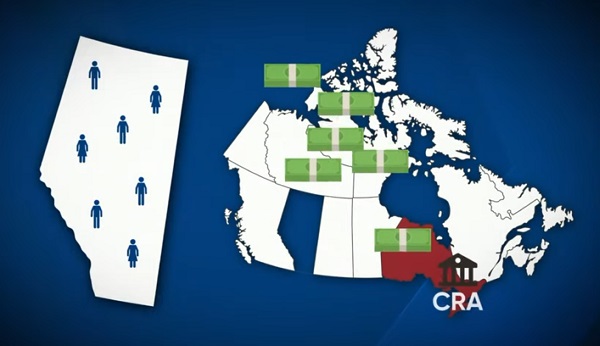
A new video from the Alberta Next panel looks at whether Alberta should stop relying on Ottawa to collect our provincial income taxes. Quebec already does it, and Alberta already collects corporate taxes directly. Doing the same for personal income taxes could mean better tax policy, thousands of new jobs, and less federal interference. But it would take time, cost money, and require building new systems from the ground up.
Alberta
Cross-Canada NGL corridor will stretch from B.C. to Ontario

Keyera Corp.’s natural gas liquids facilities in Fort Saskatchewan. Photo courtesy Keyera Corp.
From the Canadian Energy Centre
By Will Gibson
Keyera ‘Canadianizes’ natural gas liquids with $5.15 billion acquisition
Sarnia, Ont., which sits on the southern tip of Lake Huron and peers across the St. Clair River to Michigan, is a crucial energy hub for much of the eastern half of Canada and parts of the United States.
With more than 60 industrial facilities including refineries and chemical plants that produce everything from petroleum, resins, synthetic rubber, plastics, lubricants, paint, cosmetics and food additives in the southwestern Ontario city, Mayor Mike Bradley admits the ongoing dialogue about tariffs with Canada’s southern neighbour hits close to home.
So Bradley welcomed the announcement that Calgary-based Keyera Corp. will acquire the majority of Plains American Pipelines LLP’s Canadian natural gas liquids (NGL) business, creating a cross-Canada NGL corridor that includes a storage hub in Sarnia.
“As a border city, we’ve been on the frontline of the tariff wars, so we support anything that helps enhance Canadian sovereignty and jobs,” says the long-time mayor, who was first elected in 1988.
The assets in Sarnia are a key piece of the $5.15 billion transaction, which will connect natural gas liquids from the growing Montney and Duvernay plays in B.C. and Alberta to markets in central Canada and the eastern U.S. seaboard.
NGLs are hydrocarbons found within natural gas streams including ethane, propane and pentanes. They are important energy sources and used to produce a wide range of everyday items, from plastics and clothing to fuels.
Keyera CEO Dean Setoguchi cast the proposed acquisition as an act of repatriation.
“This transaction brings key NGL infrastructure under Canadian ownership, enhancing domestic energy capabilities and reinforcing Canada’s economic resilience by keeping value and decision-making closer to home,” Setoguchi told analysts in a June 17 call.
“Plains’ portfolio forms a fully integrated cross Canada NGL system connecting Western Canada supply to key demand centres across the Prairie provinces, Ontario and eastern U.S.,” he said.
“The system includes strategic hubs like Empress, Fort Saskatchewan and Sarnia – which provide a reliable source of Canadian NGL supply to extensive fractionation, storage, pipeline and logistics infrastructure.”
Martin King, RBN Energy’s managing director of North America Energy Market Analysis, sees Keyera’s ability to “Canadianize” its NGL infrastructure as improving the company’s growth prospects.
“It allows them to tap into the Duvernay and Montney, which are the fastest growing NGL plays in North America and gives them some key assets throughout the country,” said the Calgary-based analyst.
“The crown assets are probably the straddle plants in Empress, which help strip out the butane, ethane and other liquids for condensate. It also positions them well to serve the eastern half of the country.”
And that’s something welcomed in Sarnia.
“Having a Canadian source for natural gas would be our preference so we see Keyera’s acquisition as strengthening our region as an energy hub,” Bradley said.
“We are optimistic this will be good for our region in the long run.”
The acquisition is expected to close in the first quarter of 2026, pending regulatory approvals.
Meanwhile, the governments of Ontario and Alberta are joining forces to strengthen the economies of both regions, and the country, by advancing major infrastructure projects including pipelines, ports and rail.
A joint feasibility study is expected this year on how to move major private sector-led investments forward.
-
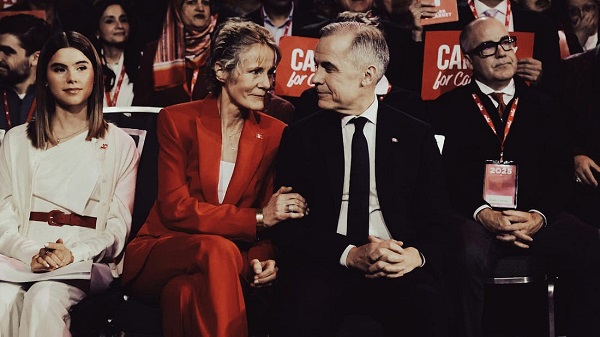
 Business2 days ago
Business2 days ago103 Conflicts and Counting Unprecedented Ethics Web of Prime Minister Mark Carney
-
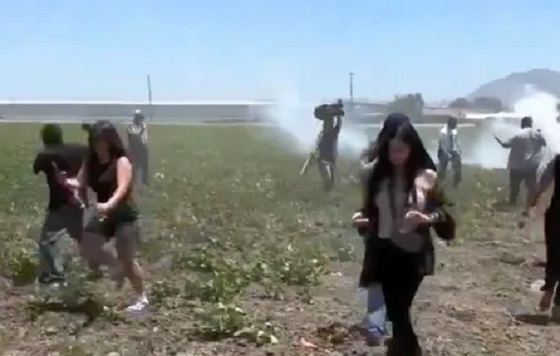
 illegal immigration1 day ago
illegal immigration1 day agoICE raids California pot farm, uncovers illegal aliens and child labor
-

 Uncategorized13 hours ago
Uncategorized13 hours agoCNN’s Shock Climate Polling Data Reinforces Trump’s Energy Agenda
-

 Addictions5 hours ago
Addictions5 hours agoWhy B.C.’s new witnessed dosing guidelines are built to fail
-

 Business3 hours ago
Business3 hours agoCarney Liberals quietly award Pfizer, Moderna nearly $400 million for new COVID shot contracts
-

 Energy1 day ago
Energy1 day agoLNG Export Marks Beginning Of Canadian Energy Independence
-

 Business1 day ago
Business1 day agoCarney government should apply lessons from 1990s in spending review
-
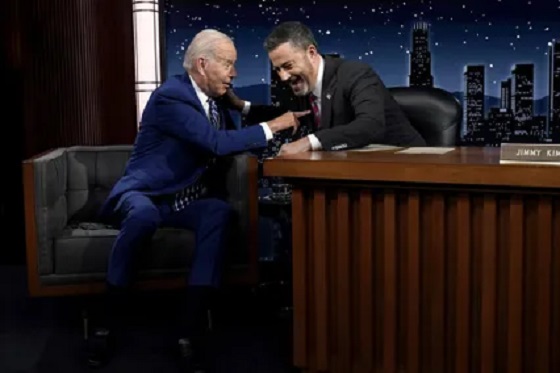
 Entertainment1 day ago
Entertainment1 day agoStudy finds 99% of late-night TV guests in 2025 have been liberal


